The growth of video and images in terms of resolution, frequency and sampling, creats de need for the Codec to be more and more performant. H264 had remplaced MPEG-2, but the successor of H264 had been existing for the past 2 years. But we don’t know much about it as it not used often.
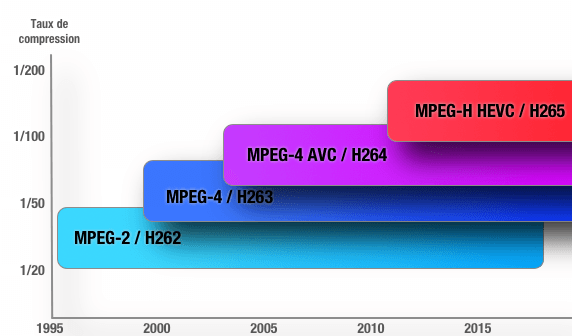
Benefits
The Benefits of a codec is the key to its usage. They have to be significant. H265 is twice as efficient as the previous H264.
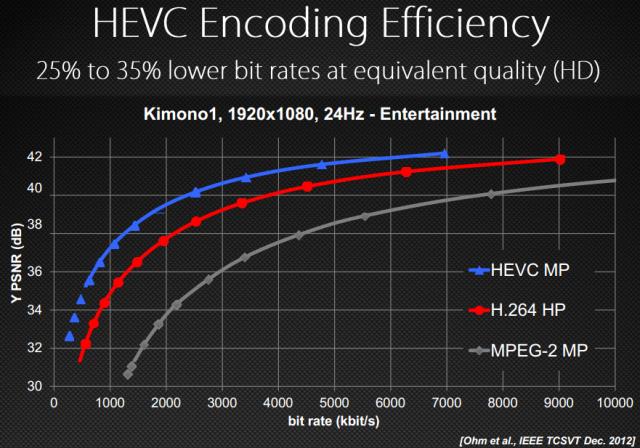
This means that for the same compression rate, the image will be twice as less deteriorated. For our eye to see any differences it has to be in a big compression.

Or for the same image quality, the file will be twice as light.
We understand right away the value of this codec for filming (same volume cards) and broadcasting (same bandwidth), We can go from HD to UHD (4x pixels) only doubling the bitrate and without giving up on quality.
Technically H265 can encode up to 8K definition (8192×4320) and to 300 i/s.
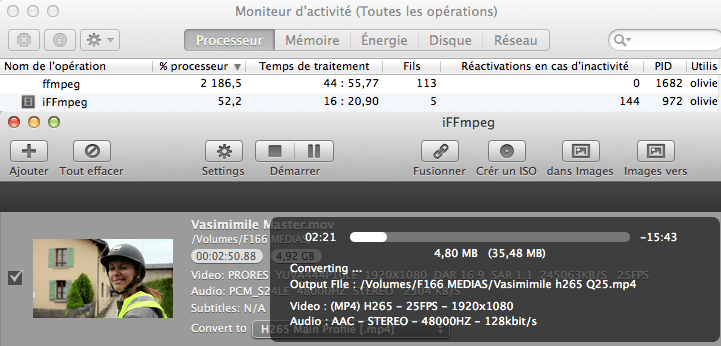
Disadvantage : encoding time
The usual marketing will certainly put on a pedestal all the benefits without mentioning the disadvantage.
The complexity of this codec will cost a lot of hardware resources. The division by 2 of the bitrate, comes from powerful movement prediction calculs.
On the same device and for the same file, the encoding time will at least be multiplied by 3.
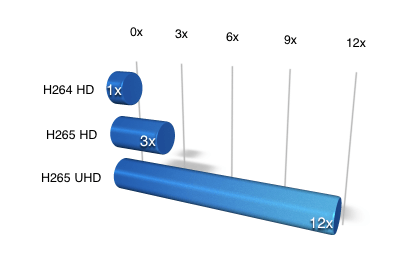
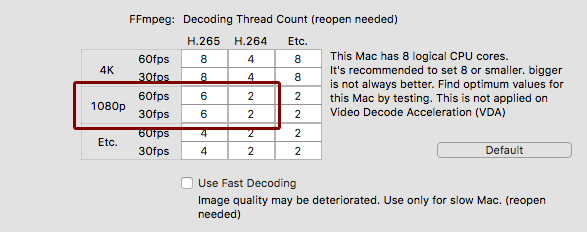
Disadvantages : reading/decoding
This complexity is also a disadvantage for reading and decoding :
– For post production : Heavy computational cost (Multiply by 2 minimum) that is amputating real-time effect ressources.
– For mobile devices (hundreds of milions) too many processor resources = power eater.
In fact it is already the case for H264, but a trick was found quicly : a specific chip* in charge of decoding. The inconvenience is that these chips decoding h264 don’t do h265, but the contrary is possible.
H265 broadcasting on mobile devices will get marginalized for a moment. So its existence wont be the end of H264 yet.
*That’s why Final Cut Pro X is running so smoothly with native h264 files.
[Update] 10/06/2017
At the WWDC 2017, Apple told that H265 videos will be used in the new containeur : HEIF, which looks easy to use.
There are also input on minimal settings for encoding and decoding.


Competitors

The main competitors of H265 are Dalaa and Google’s Vp9. The winner will probably be the one the the easiest use and free licence of use. Especialy of construction and use of encoding and decoding chips.

There ‘s also a version made with reverse engineering : le x265 is massively used, even more by big encoding softwares : Sorenson Squeeze and Episode Pro

AV1 of the Alliance for Open Media will possibly change the game in March 2017, there will be a system of using licence more accessible and simple than H265

